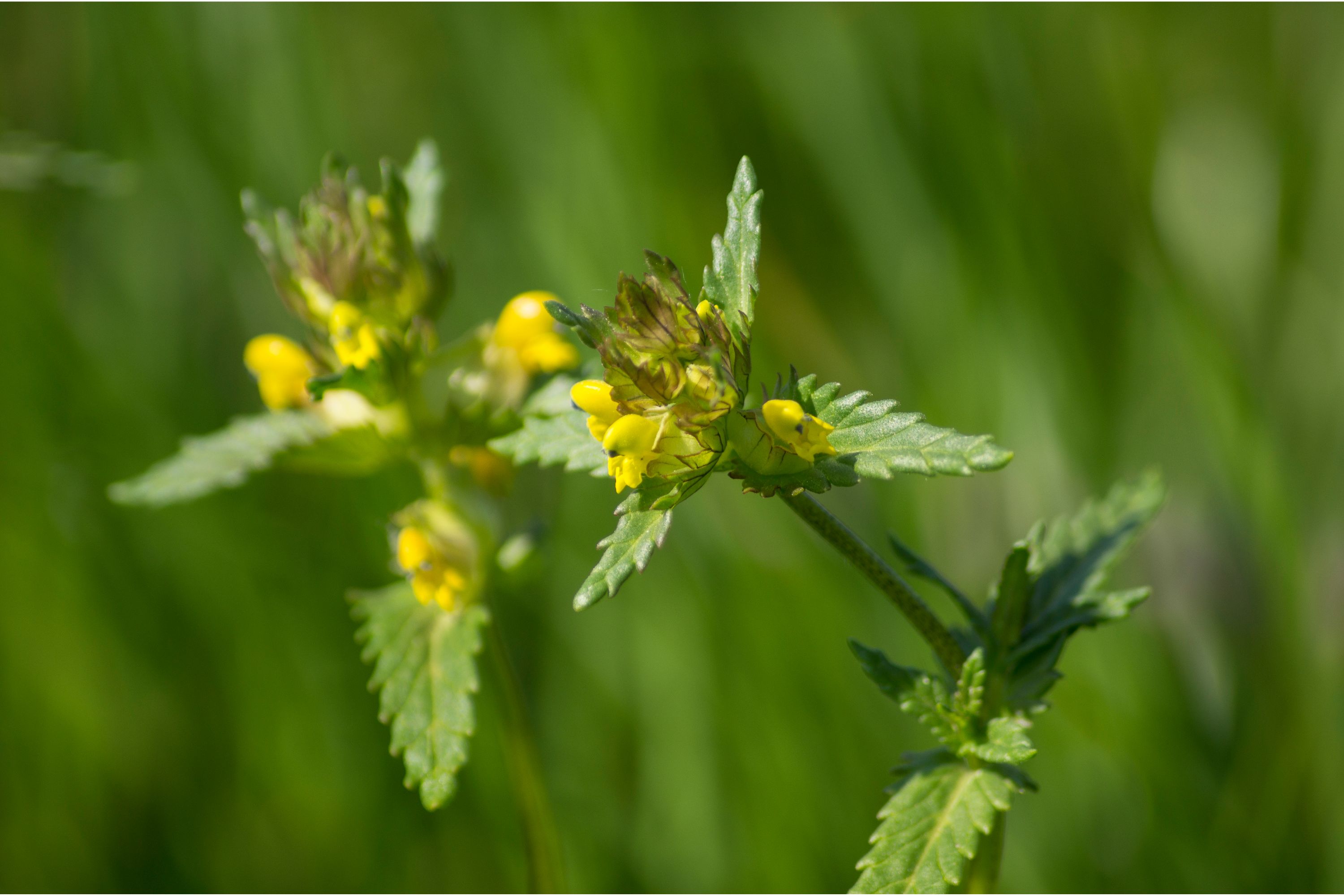Yellow rattle
(Rhinanthus minor)

Description
Rhinanthus minor, known as yellow rattle, is a herbaceous wildflower in the genus Rhinanthus in the family Orobanchaceae (the broomrapes). It has circumpolar distribution in Europe, Russia, western Asia, and northern North America. An annual plant, yellow rattle grows up to 10–50 centimetres (3.9–19.7 in) tall, with upright stems and opposite, simple leaves. The fruit is a dry capsule, with loose, rattling seeds. The preferred habitat of Rhinanthus minor is dry fields or meadows; it tolerates a wide range of soil types. It flowers in the summer between May and September. It is hemiparasitic, notably on Poaceae (grasses) and Fabaceae (legumes), and farmers consider it to be a pest, as it reduces grass growth. Yellow rattle is used to create or restore wildflower meadows, where it maintains species diversity by suppressing dominant grasses and the recycling of soil nutrients. The seed is sown thinly onto grassland from August to November—to germinate the following spring, the seeds need to remain in the soil throughout the winter months. Yellow rattle is a herbaceous annual plant that resembles the larger greater yellow rattle (Rhinanthus angustifolius). The plant grows to up to 10–50 centimetres (3.9–19.7 in) tall, with opposite, simple leaves measuring 20–30 millimetres (0.79–1.18 in) × 5–8 millimetres (0.20–0.31 in). The leaves are sessile (they grow directly from the stem), somewhat heart-shaped at the base, otherwise ovate (oval-shaped) to lanceolate (shaped like a lance tip), dentate (toothed) and scabrid (a little rough to the touch). The stem, which stands upright, can be simple or branched, is four-angled and often streaked or spotted black. The yellow flowers are 13 to 15 millimetres (0.51 to 0.59 in) across and have a straight tube for the petals. The silvery-coloured fruit is a dry capsule, which contains loose, rattling seeds when ripe that give the plant one of its common names. The herbalist Nicholas Culpeper, in his The English Physician (first published in 1652), wrote of yellow rattle as being "good for cough, or dimness of sight". The plant has a reputation of being toxic to animals. The seeds contain iridoids which cause them to have a bitter taste. Rhinanthus minor is found in Europe, western Russia, western Siberia, northern USA and throughout Canada.
Taxonomic tree:







